Car body glue
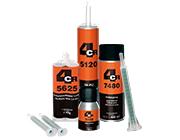
PU glue, windscreen and bodywork glue
-
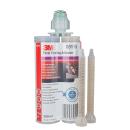 081152K Epoxy Glue 200mlBody panels
081152K Epoxy Glue 200mlBody panels -
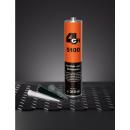 5100.31011K PU adhesive jointWhite - 310ml
5100.31011K PU adhesive jointWhite - 310ml -
 5100.31021K PU adhesive jointBlack - 310ml
5100.31021K PU adhesive jointBlack - 310ml -
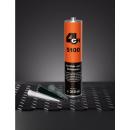 5100.31031K PU adhesive jointGrey - 310ml
5100.31031K PU adhesive jointGrey - 310ml -
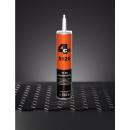 5120.03001K PU windscreen adhesiveBlack - 310ml
5120.03001K PU windscreen adhesiveBlack - 310ml -
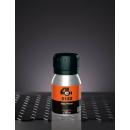 5122.0030Glass primersBlack - 30ml
5122.0030Glass primersBlack - 30ml -
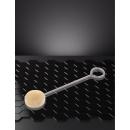 5125.0001Brush applicatorFor 5121, 5122 and 5132
5125.0001Brush applicatorFor 5121, 5122 and 5132 -
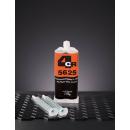 5625.00502K PU PVC adhesive50ml - 1.5 minutes
5625.00502K PU PVC adhesive50ml - 1.5 minutes -
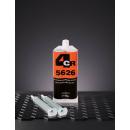 5626.00502K PU PVC adhesive50ml - 3.5 minutes
5626.00502K PU PVC adhesive50ml - 3.5 minutes -
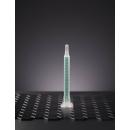 5630.0050Mixing tip x 10For 50ml glue ref 5625 and 5626
5630.0050Mixing tip x 10For 50ml glue ref 5625 and 5626 -
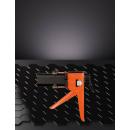 5635.0001Application gunFor 50ml cartridge
5635.0001Application gunFor 50ml cartridge -
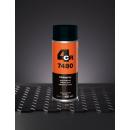 7480.0400Spray glue400ml
7480.0400Spray glue400ml
︾
Professional bodywork adhesives for your car or motorbike repairs:
Bodywork adhesives play an essential role in car repairs, offering an effective alternative to traditional mechanical fixing methods. These adhesives, specially designed for bodywork components, offer significant advantages in terms of ease of application, durability and aesthetics. Here's an overview of bodywork adhesives and their common uses:
Types of bodywork adhesives :
Structural car adhesives:
These adhesives are formulated to provide high structural strength, making them a preferred choice for assembling structural body components such as side panels, doors and chassis components. They help create strong, rigid and durable joints.
Elastic car body adhesives :
These adhesives offer a degree of flexibility once cured, making them ideal for bodywork areas subject to vibration, mechanical stress or slight deformation. They are often used to bond items such as seals, interior trim and other components subject to movement.
Car body adhesives for plastics:
These adhesives are specially formulated for optimum adhesion to plastic surfaces, enabling the repair of plastic body components such as bumpers, mirrors and interior trim elements.
Advantages of bodywork adhesives :
Ease of application:
Bodywork adhesives are often ready to use and are easily applied using an applicator gun. This reduces installation time compared to traditional fixing methods.
Reduced noise and vibration:
By creating continuous joints, body adhesives help to reduce noise and vibration, improving driver and passenger comfort.
Reduced weight:
Using body adhesives can help reduce the overall weight of the vehicle compared to using mechanical fasteners, which can improve fuel efficiency.
Improved aesthetics:
Body adhesives create discreet, aesthetically pleasing joints, often eliminating the need for visible drilling or exposed fixing points.
Corrosion resistance:
Body adhesives, when chosen correctly, can offer protection against corrosion by eliminating potential perforations caused by mechanical fasteners.
Adaptability to a variety of materials:
These adhesives are formulated to adhere to a variety of materials used in automotive construction, including metal, plastic, Fiberglass and other composites.
The judicious use of body adhesives requires a precise understanding of the specific properties of each type of adhesive and application in accordance with the manufacturer's recommendations. These adhesives have become essential elements in the modernisation of body repair techniques, offering an effective and reliable alternative to traditional methods.
Find out more about our bodywork adhesives:
1. Windscreen adhesive :
Windscreen adhesive is an adhesive specially designed to securely fix windscreens to vehicles. It is generally based on polyurethane (PU) because of its strength and flexibility. Windscreen adhesive provides a durable bond between the glass and the bodywork, offering resistance to vibration and impact while maintaining a watertight seal.
2. Adhesive accessories :
Adhesive accessories include a variety of items to facilitate the application and use of adhesives. These can include applicator guns for tube adhesives, spatulas for precise application, applicator pads for liquid adhesives, and syringes for precise dosing of two-component adhesives.
3. Spray adhesives :
Spray adhesives are spray adhesives. They are often used for temporary applications, mounting lightweight objects or fixing materials to large surfaces. Spray adhesives can be applied quickly and evenly, but may not be as strong as other types of adhesive in extreme conditions.
4. Two-component adhesives :
Two-component adhesives consist of two separate parts that must be mixed before application. These adhesives generally offer high mechanical strength and are commonly used in applications requiring a strong, durable, stress-resistant bond. They are often used in automotive repair, construction and other industries.
5. PU bodywork gaskets :
BodyworkPU (polyurethane)gaskets are sealing materials used to seal and protect bodywork joints. They are often applied to seal areas vulnerable to water ingress, helping to prevent corrosion and damage to the vehicle structure. These PU gaskets are flexible, weather resistant and offer long-lasting adhesion.
Each of these products has specific characteristics adapted to particular needs in the automotive and bodywork sectors. The choice of adhesive or sealant often depends on the type of repair or assembly to be carried out, the materials involved, and the conditions to which the bond will be exposed. It is crucial to follow the manufacturer's recommendations to ensure optimum results.
All you need to know about car body adhesives :
Car body adhesives raise many questions among users, whether they are keen DIY enthusiasts or automotive professionals looking for reliable solutions for their projects. Here are some of the questions most frequently asked by users about car and body adhesives:
1. Which car glue should I use to repair plastic bodywork?
Users are looking for specific recommendations on choosing the right adhesive for repairing plastic components such as bumpers, mirrors and other bodywork parts.
2. How can I effectively remove an adhesive that has already been applied to the bodywork?
Questions about how to remove unwanted adhesives without damaging the paintwork or bodywork are common. Users are looking for safe and effective methods.
3. What is the best car body adhesive for fixing a rear-view mirror?
Fixing rear-view mirrors requires a specific adhesive to ensure a strong bond. Users want to know which adhesive to choose to ensure a long-lasting hold.
4. Is bodywork adhesive resistant to weather and temperature variations?
The durability of the adhesive in changing weather conditions is a major concern. Users want to be sure that the bond remains strong in all weather conditions.
5. Can a universal adhesive be used for all bodywork materials?
Some users want to know if there is a multi-purpose adhesive suitable for different materials, such as metal, plastic, Fiberglass, etc.
6. Can bodywork adhesive be painted after drying?
The question of paint on the glued surface is frequently asked. Users want to know whether the paint can adhere properly after the adhesive has been applied.
7. How do I remove the remaining adhesive after dismantling a bonded part?
After dismantling a bonded part, users want advice on how to remove the adhesive residue effectively without damaging the bodywork.
8. Is bodywork adhesive suitable for Spot-repairs or just large areas?
Some users question the size of repairs for which bodywork adhesive is best suited, wondering whether it is also suitable for small repairs.
9. What is the recommended drying time for body glue?
Users want to know how long it takes for the adhesive to dry completely before they can handle or expose the repaired area.
10. Can body repair adhesive be used for major structural repairs?
For repairs involving structural components, users want to know if bodybuilder adhesive offers sufficient resistance for heavier applications.
Answering these questions provides users with key information for choosing, applying and maintaining body adhesives effectively, thereby contributing to successful vehicle repairs.